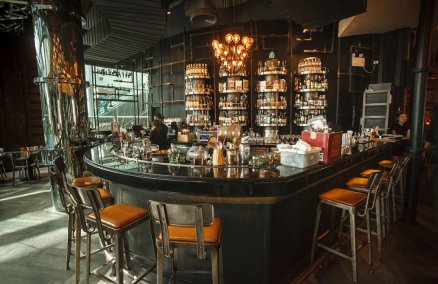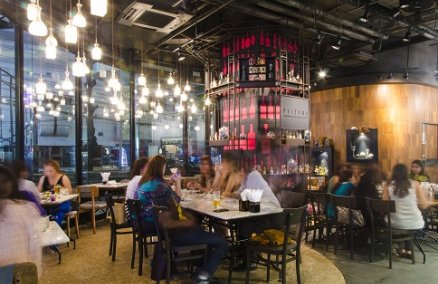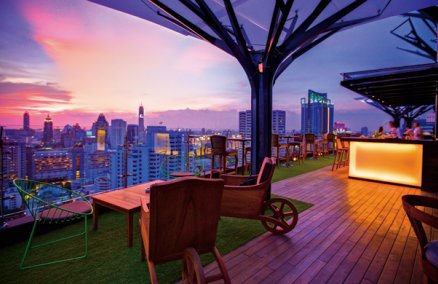I was born in Bangkok and grew up in a Muslim community in Bangrak. I went to Assumption College, so basically I’m a city person.
But my community is like a village, even though it’s a ten-minute walk from Silom. I don’t know if it was strict. If you live in the South, it’s even stricter. But you have to study the Koran and your family always encourages you to go to the mosque.
I was shuttling between two worlds everyday when I went to school.
I turned down Chula. I got into their Faculty of Law but my friends all went to ABAC, so I just got carried along. I studied business there.
My first job was as a salesperson at a computer company. I didn’t have any business sense or interpersonal skills. I panicked. This was what I had studied, but I couldn’t actually do it.
I applied to the Bangkok Post for a very basic position. My editor allowed me to do many things, and I learned from the experience.
Going to the cinema is like being in a coffin. I love that atmosphere. I think it’s true of a lot of people who write about films: they love being in the dark and being hypnotized.
Writing about film allows me to write about other stuff. You can write about politics, culture and society by writing about films.
Not many Thai films deal with politics, even though politics is now so inseparable from our lives.
We just want to see film as entertainment. But I think cinema can be more than that.
We have very sophisticated political commentary and complex economic reports, so why don’t we cover art and culture like that. Even with just a page in the newspaper.
The government tries to officially define Thai culture. See what they support: traditional Thai performances or elephants or monks or anything to do with temples.
You have to let culture grow organically, instead of trying to impose a definition. The issues of hill tribe people or Muslim people, is that part of Thai culture? If you have this official definition, then you will end up excluding a lot of things.
After 9/11 and the bombings in the South we heard only from the hardliners: the bin Laden types and the extremely liberal Muslims in Europe, who criticize Islam very strongly. We only heard from these two groups because they’re such colorful characters.
The voice of the moderate should be heard more. I met these two friends six years ago, with whom I did three documentaries about Muslim issues in Bangkok. We try to present another side of Islam.
In Baby Arabia [Rithdee’s film about a Thai-Muslim rock band], we tell people, look, Muslims can be fun. They can dance at a concert. They can communicate through means other than violence and religious strictness.
I feel this burden to explain that not all Muslims are bad. That’s why we made the documentaries in the first place.
Islam has to find a new way to talk to non-Muslims, to let them understand that we are happy and sad like others. If we have problems, it’s not because we’re Muslim; it’s because we are human.
The biggest obstacle for Thai independent films is the lack of space to present the films. Without a permanent public space, we cannot expand the audience. The BACC is a good start.
We need all kinds of movies, even slapstick comedies, romance and horror. But we need space for other kinds of films as well. Both of them have to co-exist.
We have to allow filmmakers to criticize the government and not censor them. We cite Korea as an example for exporting culture. But in Korea they can criticize their government openly.
I do not agree with censorship and banning [Insects in the Backyard]. Cutting and banning stand directly opposite to what the state is trumpeting about promoting the Creative Industry. They never talk about cultural issues at the ASEAN summits. They talk about economic issues, but I think that’s a big waste of opportunity.
I work all the time. I don’t have hobbies.
The best thing about Bangkok is the fact that this is not the best place on Earth but you cannot escape it. If you live in Bangkok, you have to solve all your problems by yourself. It’s a spiritual exercise, in a way.





















